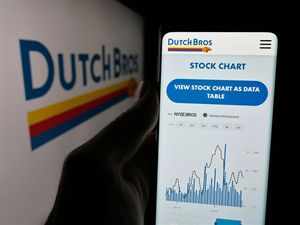
Speciality material and gas containment company Luxfer (NYSE: LXFR) reported Q4 CY2024 results topping the market’s revenue expectations, with sales up 7.8% year on year to $103.4 million. Its non-GAAP profit of $0.31 per share was 40.9% above analysts’ consensus estimates.
Is now the time to buy Luxfer? Find out by accessing our full research report, it’s free.
Luxfer (LXFR) Q4 CY2024 Highlights:
- Revenue: $103.4 million vs analyst estimates of $89.5 million (7.8% year-on-year growth, 15.5% beat)
- Adjusted EPS: $0.31 vs analyst estimates of $0.22 (40.9% beat)
- Adjusted EBITDA: $14.3 million vs analyst estimates of $11.6 million (13.8% margin, 23.3% beat)
- Adjusted EPS guidance for the upcoming financial year 2025 is $1 at the midpoint, missing analyst estimates by 4.8%
- EBITDA guidance for the upcoming financial year 2025 is $50 million at the midpoint, below analyst estimates of $51.2 million
- Operating Margin: 3.9%, in line with the same quarter last year
- Free Cash Flow Margin: 21.8%, up from 14.7% in the same quarter last year
- Market Capitalization: $373.6 million
Company Overview
With its magnesium alloys used in the construction of the famous Spirit of St. Louis aircraft, Luxfer (NYSE: LXFR) offers specialized materials, components, and gas containment devices to various industries.
General Industrial Machinery
Automation that increases efficiency and connected equipment that collects analyzable data have been trending, creating new demand for general industrial machinery companies. Those who innovate and create digitized solutions can spur sales and speed up replacement cycles, but all general industrial machinery companies are still at the whim of economic cycles. Consumer spending and interest rates, for example, can greatly impact the industrial production that drives demand for these companies’ offerings.
Sales Growth
A company’s long-term sales performance can indicate its overall quality. Any business can put up a good quarter or two, but many enduring ones grow for years. Over the last four years, Luxfer grew its sales at a tepid 4.8% compounded annual growth rate. This was below our standard for the industrials sector and is a tough starting point for our analysis.
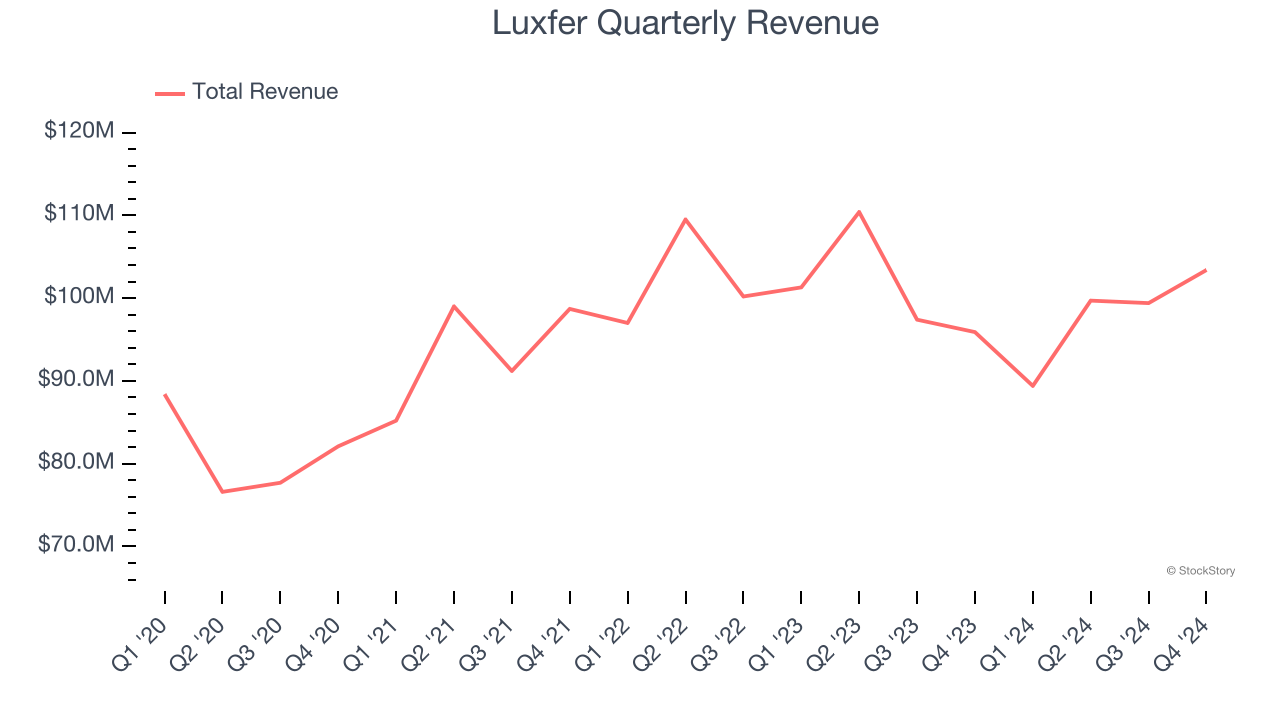
Long-term growth is the most important, but within industrials, a stretched historical view may miss new industry trends or demand cycles. Luxfer’s history shows it grew in the past but relinquished its gains over the last one years, as its revenue fell by 3.2% annually. 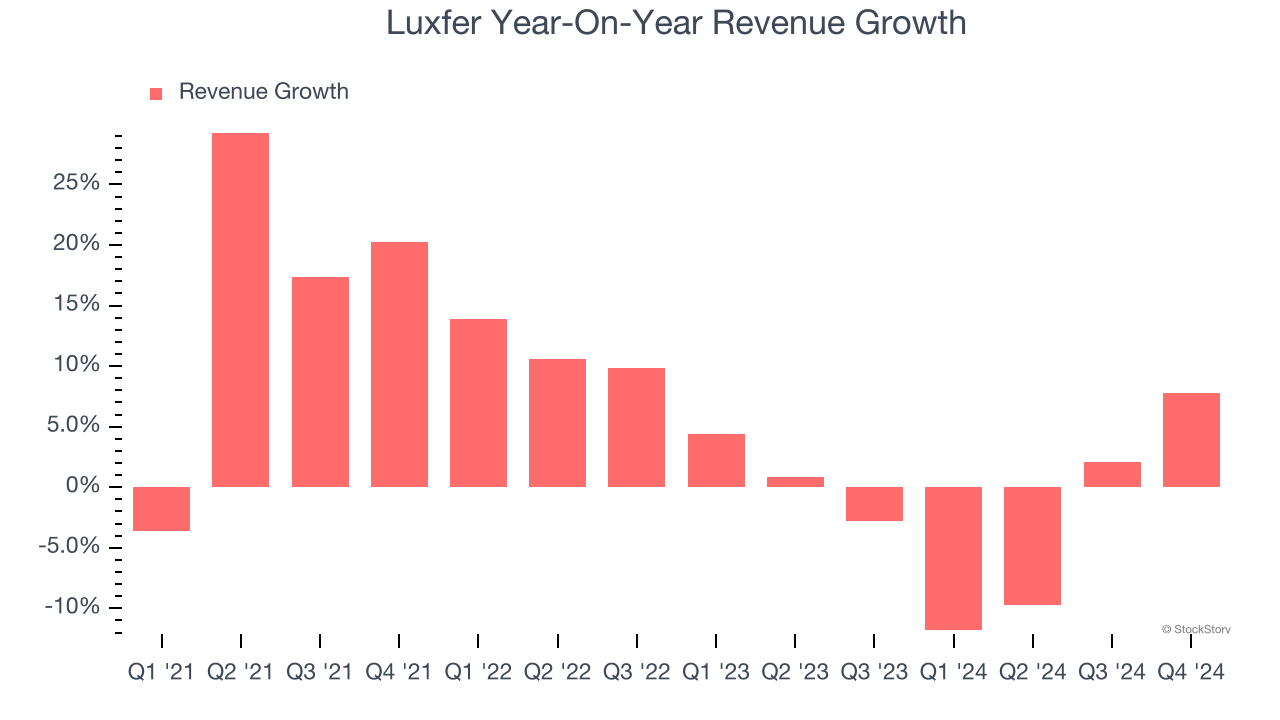
This quarter, Luxfer reported year-on-year revenue growth of 7.8%, and its $103.4 million of revenue exceeded Wall Street’s estimates by 15.5%.
Looking ahead, sell-side analysts expect revenue to remain flat over the next 12 months. While this projection suggests its newer products and services will fuel better top-line performance, it is still below the sector average.
Here at StockStory, we certainly understand the potential of thematic investing. Diverse winners from Microsoft (MSFT) to Alphabet (GOOG), Coca-Cola (KO) to Monster Beverage (MNST) could all have been identified as promising growth stories with a megatrend driving the growth. So, in that spirit, we’ve identified a relatively under-the-radar profitable growth stock benefiting from the rise of AI, available to you FREE via this link.
Operating Margin
Luxfer has done a decent job managing its cost base over the last five years. The company has produced an average operating margin of 9.8%, higher than the broader industrials sector.
Looking at the trend in its profitability, Luxfer’s operating margin decreased by 4 percentage points over the last five years. This raises an eyebrow about the company’s expense base because its revenue growth should have given it leverage on its fixed costs, resulting in better economies of scale and profitability.
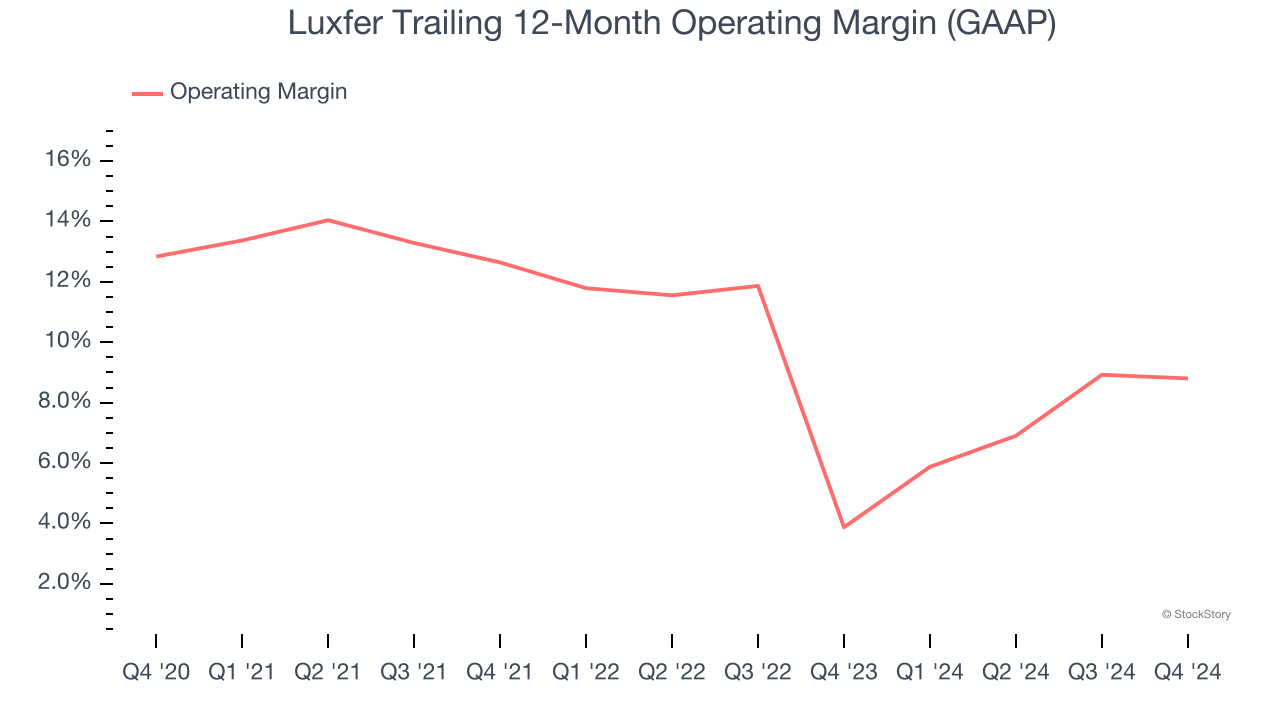
This quarter, Luxfer generated an operating profit margin of 3.9%, in line with the same quarter last year. This indicates the company’s cost structure has recently been stable.
Earnings Per Share
We track the long-term change in earnings per share (EPS) for the same reason as long-term revenue growth. Compared to revenue, however, EPS highlights whether a company’s growth is profitable.
Luxfer’s full-year EPS dropped 19.5%, or 3.6% annually, over the last five years. We tend to steer our readers away from companies with falling revenue and EPS, where diminishing earnings could imply changing secular trends and preferences. If the tide turns unexpectedly, Luxfer’s low margin of safety could leave its stock price susceptible to large downswings.
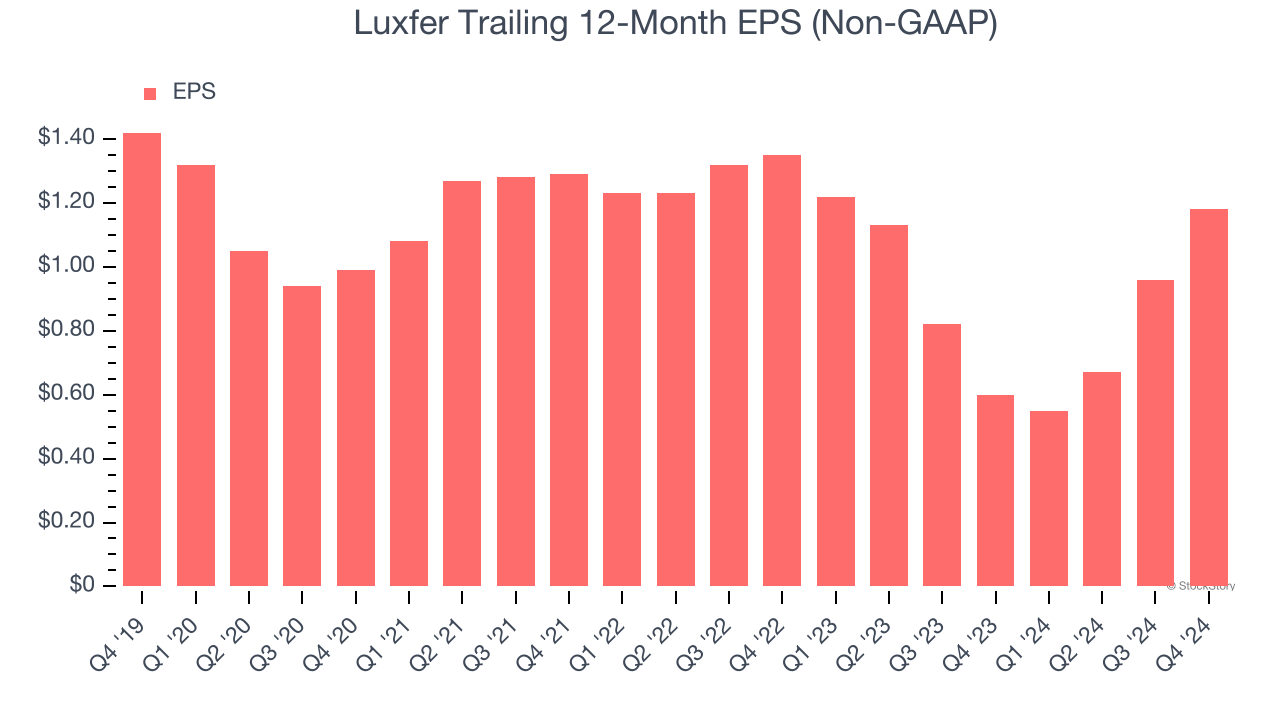
Like with revenue, we analyze EPS over a more recent period because it can provide insight into an emerging theme or development for the business.
For Luxfer, its two-year annual EPS declines of 6.5% show it’s continued to underperform. These results were bad no matter how you slice the data.
In Q4, Luxfer reported EPS at $0.31, up from $0.09 in the same quarter last year. This print easily cleared analysts’ estimates, and shareholders should be content with the results. Over the next 12 months, Wall Street expects Luxfer’s full-year EPS of $1.18 to shrink by 11.9%.
Key Takeaways from Luxfer’s Q4 Results
We were impressed by how significantly Luxfer blew past analysts’ revenue, EPS, and EBITDA expectations this quarter. On the other hand, its full-year revenue and EBITDA guidance missed. Zooming out, we think this was a mixed quarter. The stock remained flat at $13.83 immediately after reporting.
Sure, Luxfer had a solid quarter, but if we look at the bigger picture, is this stock a buy? When making that decision, it’s important to consider its valuation, business qualities, as well as what has happened in the latest quarter. We cover that in our actionable full research report which you can read here, it’s free.



